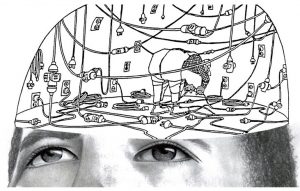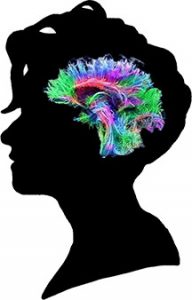Schema
The more the schemata are differentiated, the smaller the gap between the new and the familiar becomes.
—Jean Piaget
 Schema theory explains how our previous experiences, knowledge, emotions and understandings affect what and how we learn (Harvey & Goudvis, 2000). Schema is the background knowledge and experience readers bring to the text. Good readers draw on prior knowledge and experience to help them understand what they are reading and are thus able to use that knowledge to make connections. Struggling readers often move directly through a text without stopping to consider whether the text makes sense based on their own background knowledge, or whether their knowledge can be used to help them understand confusing or challenging materials. By teaching students how to connect to text they are able to better understand what they are reading (Harvey & Goudvis, 2000). Accessing prior knowledge and experiences is a good starting place with teaching strategies because every student has experiences, knowledge, opinions, and emotions that they can draw upon. Keene and Zimmerman (1997) concluded that students comprehend better when they make different kinds of connections: Text-to-Self; Text-to-Text; Text-to-World.
Schema theory explains how our previous experiences, knowledge, emotions and understandings affect what and how we learn (Harvey & Goudvis, 2000). Schema is the background knowledge and experience readers bring to the text. Good readers draw on prior knowledge and experience to help them understand what they are reading and are thus able to use that knowledge to make connections. Struggling readers often move directly through a text without stopping to consider whether the text makes sense based on their own background knowledge, or whether their knowledge can be used to help them understand confusing or challenging materials. By teaching students how to connect to text they are able to better understand what they are reading (Harvey & Goudvis, 2000). Accessing prior knowledge and experiences is a good starting place with teaching strategies because every student has experiences, knowledge, opinions, and emotions that they can draw upon. Keene and Zimmerman (1997) concluded that students comprehend better when they make different kinds of connections: Text-to-Self; Text-to-Text; Text-to-World.
Rationale Text-to-Self: Text-to-self connections are highly personal connections that a reader makes between a piece of reading material and the reader’s own experiences or life. An example of a text-to-self connection might be, “This story reminds me of a trip we took to my grandfather’s apple orchard.”
Text-to-Self: Text-to-self connections are highly personal connections that a reader makes between a piece of reading material and the reader’s own experiences or life. An example of a text-to-self connection might be, “This story reminds me of a trip we took to my grandfather’s apple orchard.”
Text-to-Text: Sometimes when reading, readers are reminded of other things that they have read, other books by the same author, stories from a similar genre, or perhaps on the same topic. These types of connections are text-to-text connections. Readers gain insight during reading by thinking about how the information they are reading connects to other familiar text. “This character has the same problem that I read about in a book last year,” would be an example of a text-to-text connection.
Text-to-World: Text-to-world connections are the larger connections that a reader brings to a reading situation. We all have ideas about how the world works that goes far beyond our own personal experiences. We learn about things through television, movies, magazines, and newspapers. Often it is the text-to-world connections that teachers are trying to enhance when they teach lessons in science, social studies, and literature. An example of a text-to-world connection would be when a reader says, “I heard a program on the radio that talked about things described in this article.”
Cris Tovani (2000) offers reasons why connecting to text helps readers:
- it helps readers understand how characters feel and the motivation behind their actions
- it helps readers have a clearer picture in their head as they read thus making the reader more engaged
- it keeps the reader from becoming bored while reading
- it sets a purpose for reading and keeps the reader focused
- readers can see how other readers connected to the reading
- it forces readers to become actively involved
- it helps readers remember what they have read and ask questions about the text
Schema in Action
To effectively use this strategy, spend time doing Think-A-Loud modeling for students how to makemeaningful connections. The easiest connection to teach is Text-to-Self. Initially model Text- to-Self connections with selections that are relatively close to the student’s personal experiences. A key phrase that prompts Text-to-Self connections is, “this reminds me of…” Next, model how to make Text-to-Textconnections. Sometimes when we read, we are reminded of other texts we have read. Encourage students to consider the variety of texts they have experienced which will help them understand the new selection. Finally, model how to make Text-to-World connections. Building the necessary background knowledge is a crucial means for providing Text-to-World support and may be used to pre-empt reading failure. Harvey and Goudvis (2000) caution that merely making connections is not sufficient. Students may make tangential connections that can distract them from the text. Throughout instruction, students need to be challenged to analyze how their connections are contributing to their understanding of the text. Text connections should lead to text comprehension.
Examples of connecting statements to use as a reference or as prompts for discussion
- This part reminds me of….
- I felt like…(character) when I….
- If that happened to me I would….
- This book reminds me of…(another text) because….
- I can relate to…(part of text) because one time….
- Something similar happened to me when….
Examples of questions that can be used to facilitate student connections
Text-to-Self
- What does this remind me of in my life? What is this similar to in my life?
- How is this different from my life?
- Has something like this ever happened to me?
- How does this relate to my life?
- What were my feelings when I read this?
Text-to-Text
- What does this remind me of in another book I’ve read? How is this text similar to other things I’ve read?
- How is this different from other books I’ve read?
- Have I read about something like this before?
Text-to-World
- What does this remind me of in the real world?
- How is this text similar to things that happen in the real world?
- How is this different from things that happen in the real world?
- How did that part relate to the world around me?
